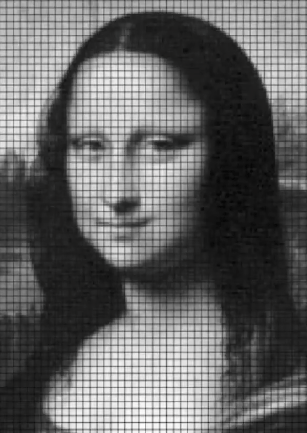In the ultimate example of science imitating art, engineers working with NASA’s Lunar Reconnaissance Orbiter recently beamed an image of the Mona Lisa to the LRO and back via laser beam in order to measure the rate of transmission between the spacecraft and Earth. This allowed them to then calibrate their software to correct for any discrepancies between the image sent and the one received, resulting in a picture-perfect result.
Leonardo would definitely have approved.
From NASA’s Goddard Space Flight Center:
As part of the first demonstration of laser communication with a satellite at the moon, scientists with NASA’s Lunar Reconnaissance Orbiter (LRO) beamed an image of the Mona Lisa to the spacecraft from Earth.
The iconic image traveled nearly 240,000 miles in digital form from the Next Generation Satellite Laser Ranging (NGSLR) Station at NASA’s Goddard Space Flight Center in Greenbelt, MD, to the Lunar Orbiter Laser Altimeter (LOLA) instrument on the spacecraft. By transmitting the image piggyback on laser pulses that are routinely sent to track LOLA’s position, the team achieved simultaneous laser communication and tracking.
“This test, and the data obtained from it, sets the stage for future high data-rate laser communications demonstrations that will be an essential feature of NASA’s next Moon mission: the Lunar Atmosphere and Dust Environment Explorer.“
Video: NASA/GSFC

